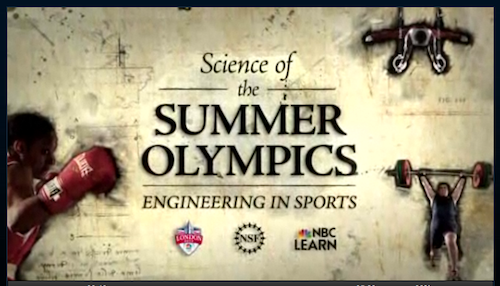During today's Breeders Cup broadcast, ESPN took a stab at trying to explain Zenyatta's superior performance ability. They put together great graphics and computer images but understandably had to take some shortcuts to "dumb it down" for the casual national television audience.
I can just see
Professor Hilary Clayton, the leading biomechanics expert in North America, pursing her lips and shaking her head, "Well, noooo, not exactly..." and
Professor Jean-Marie Denoix over in France, rolling his eyes, throwing up his hands and sighing, "Oh, mon dieu! The Americans just don't understand..."
How do you squash a PhD into three minutes? Well, you don't. But at least they tried.
Of course ESPN can't go into detail--John Brenkus only had three minutes to explain the whole thing! Anyone who knows about horses will know that it's not just about stride length and height at the withers--if it was, the big horses would dominate, and we'd have no way to explain Goldikova, Smarty Jones, Northern Dancer, Mine That Bird (he
did win the Derby!) and all the smaller, more compact Thoroughbreds who are, after all, the more common horses running in our races. And the more commonly found horses in the winner's circle are not over 17 hands.
The same is true of jumpers; it might seem like bigger horses would be better jumpers but it's not a given. There are many factors to consider.
 |
| The great 18th century racehorse champion Eclipse is believed to have excelled because he was extraordinarily "normal". His body parts were in harmonious proportion to each other, which scientists believe facilitated speed. |
Studies have been done that show that the most successful racehorses are not the largest or the smallest or the most anything but the most "average"--the ones whose proportions are average. Take Eclipse, for instance. That most successful of original racehorses left us his skeleton, which has been analyzed by
Professor Alan Wilson and his researchers at the Structure and Motion Analysis Lab at the Royal Veterinary College in England.
Based on Eclipse and other racehorses, Wilson's data analysis determined that it was not size that mattered in champion racehorses but proportion. The champion racehorses like Eclipse had all their body parts in proportion to each other--no one body part was out of a statistical range in proportion to others. Their skeletal systems demonstrated a balance of dimensions.
(By the way, the great Eclipse went down in history in the 1700s for winning 18 races--one less than Zenyatta. It is said his jockey never used a whip or spurs.)
The formula for speed is not just the distance covered in a stride, but the stride length x the stride frequency. There is also the
x factor of efficiency--how straight are the limbs, how much excess motion is there, how efficient is the respiration, etc.? How easy is it for the horse to reach his hind limbs underneath his body, and how far under his body do they reach? There are many ingredients to a racehorse's stride and speed formula.
So a horse with a shorter stride but a fleeter, more efficient turn of foot can potentially run faster than a long-striding large horse, although one wonders if the smaller horse may tire sooner if taking more breaths and more strides. But they may be more efficient strides.
This is where shoes come in. A horse that can't "get hold" of the track loses stride efficiency and, often, even stride frequency if the foot is delayed in breakover or the horse struggles to re-orient the foot to land in a certain pattern to avoid pain or limb interference or simple fatigue from sinking too deep into sandy footing.
It's probably harder and more time-consuming to train a huge huge with a huge stride like Zenyatta's, and the racing public should remember and respect that John Sherriffs opted to delay her start in the races until she was ready, probably because of her need to finish developing physically and no doubt "find her balance" when running at speed. Most big horses would not be given that luxury to develop first, race when ready.
Those are just some of the factors that enter into the equation of why Zenyatta excels. You can do formulas and analyze her all day but there are some intangibles. One them is called "heart". Not the heart in the chest, but the heart in the spirit. Zenyatta is loaded with that.
We saw that heart today.
A great racehorse will always be just out of the reach of science. If not, there'd be no reason to go to the races. Handicapping would be an exact science. But thankfully we still have that
x factor.
© Fran Jurga and Hoofcare Publishing; Fran Jurga's Hoof Blog is a between-issues news service for subscribers to Hoofcare and Lameness Journal. Please, no use without permission. You only need to ask. This blog may be read online at the blog page, checked via RSS feed, or received via a digest-type email (requires signup in box at top right of blog page). To subscribe to Hoofcare and Lameness (the journal), please visit the main site, www.hoofcare.com, where many educational products and media related to equine lameness and hoof science can be found. Questions or problems with this blog? Send email to blog@hoofcare.com.







